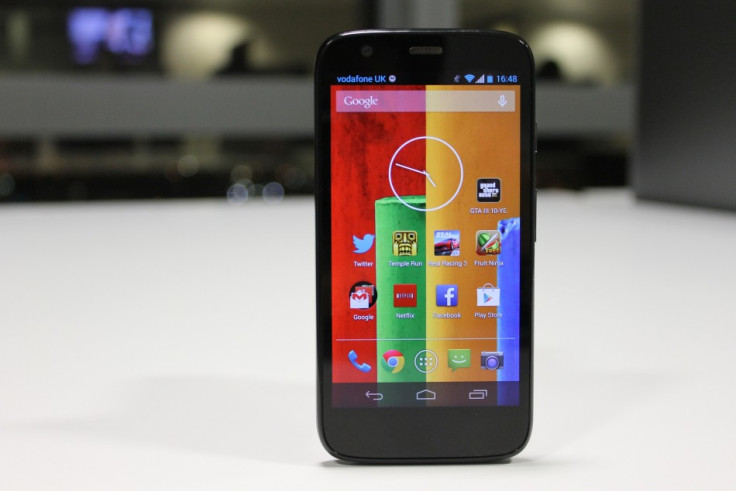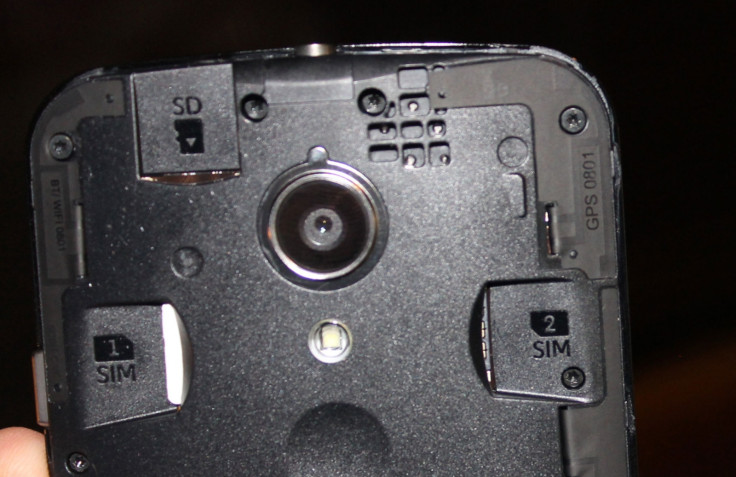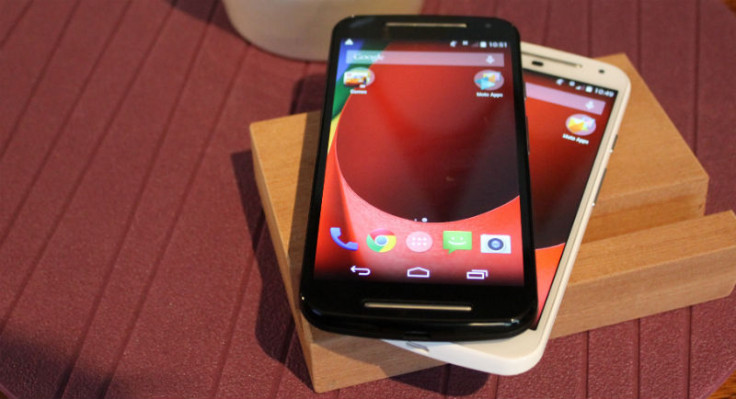Moto G (2014) vs Moto G (2013): What Has Changed?

The Motorola Moto G was the best selling smartphone in the company's long and storied history. This is some achievement considering the huge amount of competition in the market today, but the combination of decent specs, pure Android experience and crucially the budget price meant the phone appealed to a wide audience.
So can Motorola repeat the success with the 2014 version of the Moto G, which goes on sale in the UK from today, 5 September. Let's find out:
Moto G (2014) vs Moto G (2013): Design
In terms of looks the new Moto G looks quite similar to the original though as the screen size has increased the phone's footprint has obviously increased.

The original introduced a curved back with the phone tapering from 11.5mm to 6mm, which is almost identical to the new Moto G.
In terms of weight, the original was 143g compared to 149g for the new model, which isn't that much of a change considering the significant size difference.
Once again Motorola has opted to use a combination of matte finish on the rear and glossy finish on the front which isn't our favourite, but why change what's clearly a winning formula.
Finally, the Moto G will once again be available with interchangeable Motorola Shells allowing you customise your phone.
Moto G (2014) vs Moto G (2013): Screen
The original Moto G had a 4.5in screen with a resolution of 1280 x 720 pixels giving it a pixel density of 329 pixels per inch, which for a budget smartphone was (and remains) high watermark.
The screen on the 2014 edition of the Moto G has increased in size to 5in but the resolution has stayed the same, meaning the pixel density has dropped to 294ppi, but in reality the difference is not that noticeable.
Moto G (2014) vs Moto G (2013): Processor, Speakers, Dual-SIM and microSD
The original Moto G used a Qualcomm Snapdragon 400 quad-core chip with 1GB of RAM. This was more than sufficient for most operations and combined with a pure Android install, made for a pretty smooth experience.

Motorola has opted not to change things around for the new model, sticking with the same chipset and 1GB of RAM. While this should still be OK, the extra power needed to push the extra pixels could see it struggle with more intense tasks like streaming video or graphics-heavy 3D games.
Both versions of the Moto G come in 8GB or 16GB models but the 2014 edition has added a microSD card slot to allow you add up to 32GB more.

The new Moto G also adds support for dual-SIM card slots and an intelligent calling feature which will learn which SIM it should use depending on who you are calling and when.
The final major hardware difference is the speakers.
On the original, Motorola included a single speaker on the rear cover of the device. On the new Moto G you get dual speakers at the front of the device.
Moto G (2014) vs Moto G (2013): Software
The original Moto G shipped with a pure version of Android 4.3 and has since been upgraded to Android 4.4. There is no word so far on whether it will be updated to the up-coming Android L.
Motorola will ship the new Moto G with a pure version of Android 4.4.4 - the very latest version of Google's software - but crucially, Motorola has explicitly said the 2014 version of Moto G will get the Android L update when it is launched.
Moto G (2014) vs Moto G (2013): Camera
The original Moto G came with a 5 megapixel rear camera and a 1.3 megapixel camera on the front. The rear camera was poor, to say the least so it's good that Motorola has upgraded the sensor on the new model.
The 2014 version of the Moto G comes with an 8 megapixel sensor and a front-facing 2 megapixel camera.
Moto G (2014) vs Moto G (2013): Price
The original Moto G cost £135 for the 8GB model when it launched but is now available for around £100.
The new Moto G is initially on sale for £145 but we expect that to drop closer to the £100 in the lead up to Christmas.
Moto G (2014) vs Moto G (2013): Should you upgrade?

The Moto G set a new standard for budget smartphones when it launched last year. When the price dropped to around £100 it was a no-brainer for people looking to buy their first smartphone without too much compromise in terms of the experience.
The 2014 model improves on the Moto G in a number of significant ways, with the addition of a microSD card slot possibly the most welcome, along with a larger screen. Also the guarantee of getting Google's major Android L update is appealing.
The question however will be, is a slightly larger screen and a microSD card slot worth paying an extra £45 for? Only you can decide.
© Copyright IBTimes 2024. All rights reserved.






